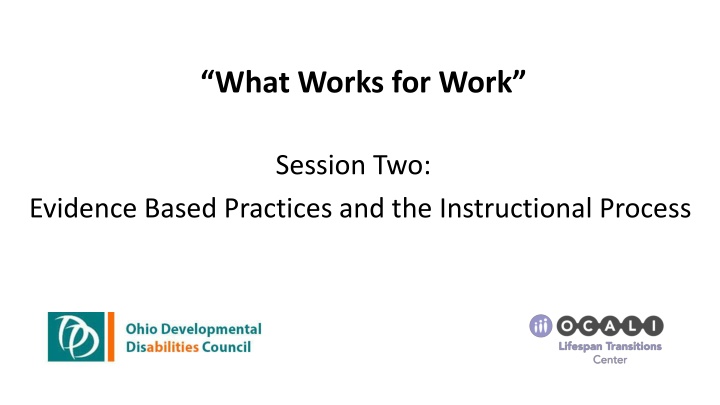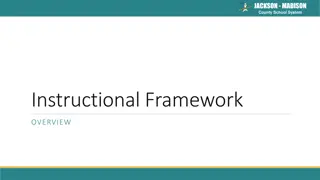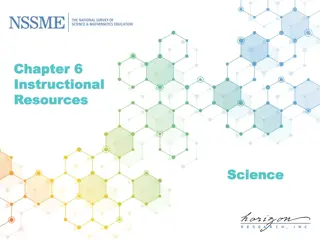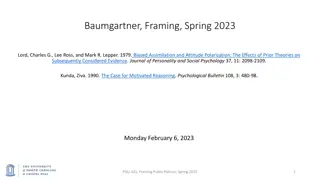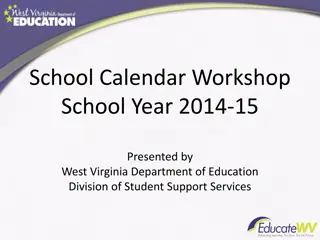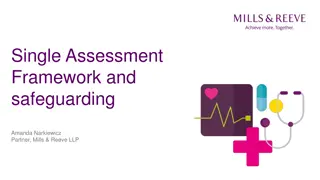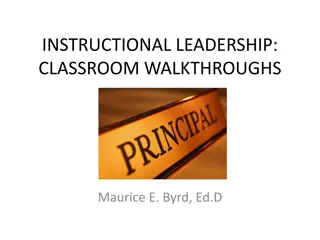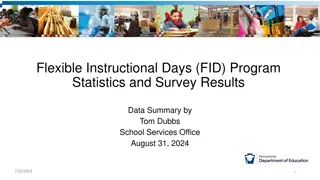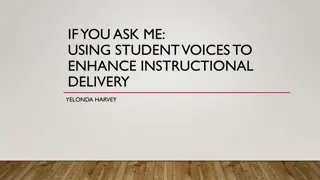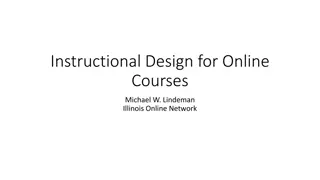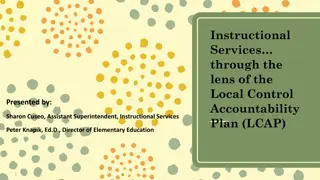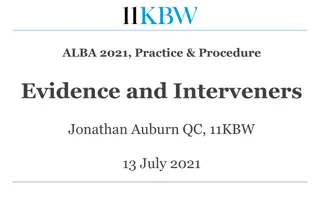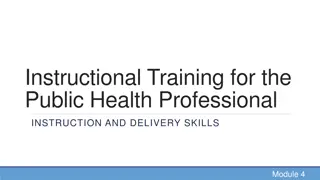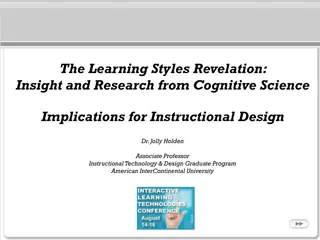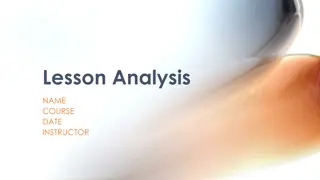Evidence-Based Practices in Instructional Process
The components of the instructional process using evidence-based practices, emphasizing the importance of systematic instruction, task analysis, fidelity considerations, and more. Learn how to define criteria for target achievement and ensure effective implementation of instructional strategies based on research, such as those outlined in IDEA 2004.
Download Presentation

Please find below an Image/Link to download the presentation.
The content on the website is provided AS IS for your information and personal use only. It may not be sold, licensed, or shared on other websites without obtaining consent from the author.If you encounter any issues during the download, it is possible that the publisher has removed the file from their server.
You are allowed to download the files provided on this website for personal or commercial use, subject to the condition that they are used lawfully. All files are the property of their respective owners.
The content on the website is provided AS IS for your information and personal use only. It may not be sold, licensed, or shared on other websites without obtaining consent from the author.
E N D
Presentation Transcript
What Works for Work Session Two: Evidence Based Practices and the Instructional Process
Components of the Instructional Process Use Evidence Based Practices Instructional strategies based on research IDEA 2004- teachers must use EBP Implement with Fidelity Know your target Define criteria to determine if the target is achieved Assure Instruction is Systematic Carefully planned sequence for instruction Prompts and task analysis are key components, as well as reinforcement Begin with Task Analysis Key to systematic instruction Essential to most EBP, e.g. chaining, prompting
Elements Must Work Together Carefully planned sequence for instruction Prompts and task analysis are key components-rewards may be too. Instructional strategies based on research IDEA 2004- teachers must use EBP Systematic Instruction EBP Know your target Define criteria to determine if the target is achieved Key to systematic instruction Essential to most EBP, e.g. chaining, prompting Task Analysis Fidelity
Fidelity Considerations Protocol The accepted or established code of procedure or behavior in any group, organization, or situation. In science and medicine, a formal set of rules and procedures to be followed during a particular research experiment, course of treatment, etc. Fidelity Fidelity assessment is defined as indicators of doing what is intended. This definition requires a) knowing what is intended, and b) having some way of knowing the extent to which a person did what was intended.
Handout #06 : Task Analysis This is a blank task analysis form found in the Task Analysis Supplement (Handout #06) This type of form can be used to record the steps to the task or skill that will be taught Can also be used to record the data for baseline and progress data.
Example This example and the blank form are from the National Professional Development Center for Autism. Additional examples of task analysis available in the Task Analysis Supplement (Handout#06).
Research Articles: Evidence for the Practices Review an article that was part of the research basis for a practice. (Handouts #4,5, 7 - choose one article) Think of a student you have worked with who may have been similar. Who was target group? Did the research do what was intended, i.e. meet the original goal of the study (fidelity)? What was the protocol? What were the outcomes?
General Protocol to Implement EBP (1) 1.Select Student and EBP. What EBP will be used to teach a targeted goal/ skill for a student? 2.Enough Knowledge? Do you know enough about the practice to implement correctly? 3.Do a Task Analysis. To identify the necessary steps of the skill. 4.Try It. Have someone else try steps to see if they are accurate and complete. Revise if needed. 5.Collect Baseline Data. What information about the goal does data collection and a task analysis give you?
General Protocol to Implement EBP (2) 6. Develop a Prompt and Reinforcement Plan. To motivate student and fade prompts. 7. Teach the EBP to the student. Modify based on student response 8. Share and practice protocol with team. Discuss challenges, fidelity, knowledge of practice. Practice the protocol with triad (teacher, student, observer - gives feedback). 9. Ongoing implementation, progress monitoring and data collection.
Examples of Student Goals using EBP 1. Student V. will communicate career choices through self-advocacy training. 2. Student A. will accurately complete work tasks within one hour through the use of mobile technology and self-monitoring supports. 3. Student S. will select and explore 10 career options through the use of visual supports, self-advocacy and computer assisted instruction. 4. Student G. will increase his independence when performing job tasks by 25% (with out the support of an aide) through the use of chaining and a visual schedule.
Example of a Protocol to Implement EBP (1) 1. Select Student and EBP 2. Student G. will increase his independence when performing job tasks by 25% (with out the support of an aide) through the use of chaining and a visual schedule. The job is filling pots with soil. 3. Enough Knowledge?- Do you know enough about chaining and a visual schedule to implement? 4. Complete a Task Analysis of the steps needed for the student to fill trays of pots with soil. 5. Try It. Have someone else try steps to see if they are accurate and complete. Revise if needed. 6. Collect Baseline Data. Have the student try the tasks and record how much assistance he needs to complete one tray
Example of a Protocol to Implement EBP (2) 7. Develop a Prompt and Reinforcement Plan. Identify steps that cause the student to need assistance. Create a visual schedule highlighting these steps to reduce need for assistance. Identify motivators for student. Create a reinforcement system for increasing independence of the task. Fade prompts systemically. 8. Teach the EBP to the student. Teach the student the steps of the task and how to use the visual schedule. 9. Share and practice protocol with team, discuss challenges, fidelity, of practice. Practice the protocol with triad (teacher, student, observer/gives feedback). 10. Ongoing implementation, progress monitoring and data collection. knowledge
Collecting and Using Data All protocols will require collecting and recording baseline data so the team knows where to begin. Ongoing data must be collected so the team can measure and report progress. The resource on the following slide offers an overview of the types of data that can be collected and how to collect the data. Recording forms and examples are also available.
Resources for Collecting and Using Data Collecting and Analyzing Youth Performance Data Collecting and Analyzing Youth Performance DataCollecting and Analyzing Youth Performance Data Download Document Watch Video
Types of Data Recording Forms Templates provided by Employment First Examples of data Collection Templates Review these data templates Discussion: Do you currently use any of these types of recording forms for collecting? What else have you found useful?
Consider the Type of Data Needed What Measures Will You Use For Your plan? Duration Time. How long does it take to do the task? Intensity (of target or issue of concern) May need to develop an intensity scale for objective measures Accuracy How accurately is the task performed?
Consider the Type of Data Needed (2) Level of Independence What level of support is needed to perform task? It is recommended that independence be one target of the plan Frequency of target goal How often is the task done or how often is assistance needed?
Certificate of Completion Please take a few minutes to complete a short eight-question survey. Response to the survey with 75% accuracy allows the learner to download a certificate of completion for the session.
